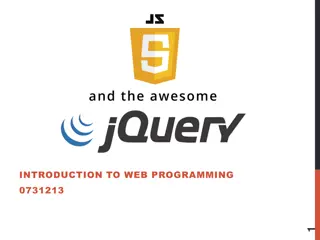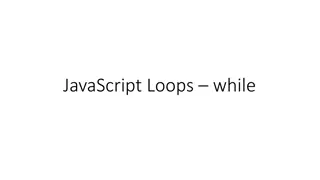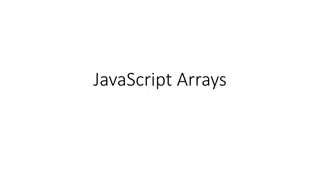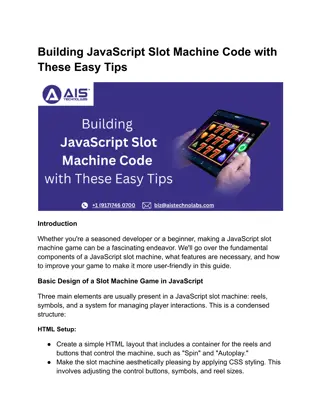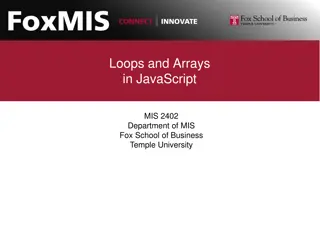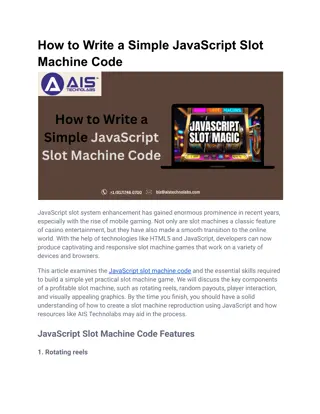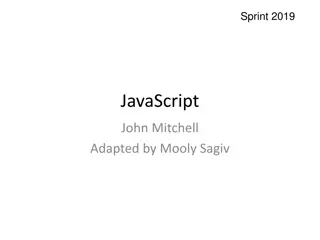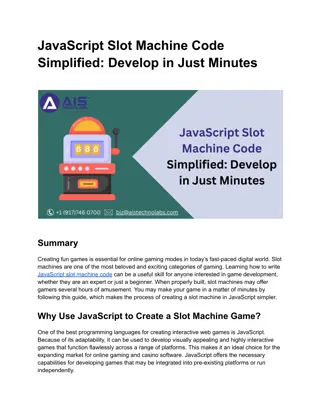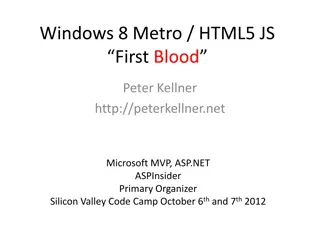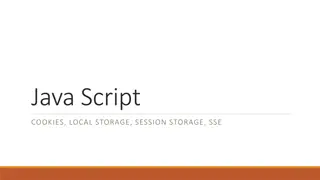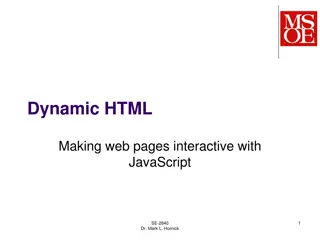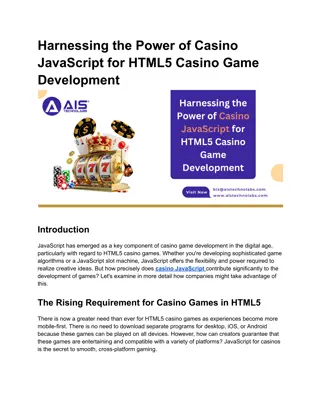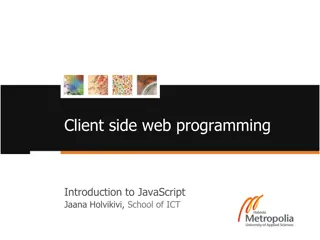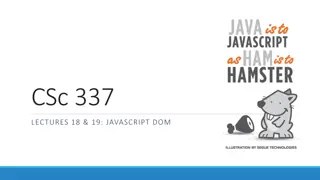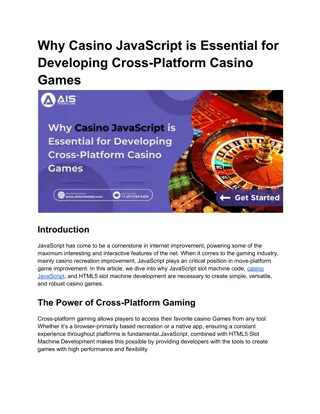Introduction to JavaScript: History, Features, and Functional Paradigm
JavaScript, initially developed by Netscape Communications in 1995, has evolved into a versatile language with support for functional programming paradigms. From its history with Netscape Navigator to its support for prototypal inheritance and functional features like higher-order functions and API consumption, JavaScript has become a fundamental tool for web development. Despite its differences from Java, JavaScript continues to be widely used and extended through frameworks, offering vast capabilities for creating interactive web applications.
Download Presentation

Please find below an Image/Link to download the presentation.
The content on the website is provided AS IS for your information and personal use only. It may not be sold, licensed, or shared on other websites without obtaining consent from the author. Download presentation by click this link. If you encounter any issues during the download, it is possible that the publisher has removed the file from their server.
E N D
Presentation Transcript
Introduction to JavaScript COMP 3700 With thanks to Rob McMahon, Fang Tang, and Jon Duckett
History 1994: Netscape Communications creates Netscape Navigator browser, most popular browser of the 90s Biggest weakness of early web was static pages 1995: Netscape directs Brendan Eich to develop a scripting language for dynamic content Initially called Mocha Then renamed LiveScript Then renamed JavaScript 1996: Microsoft acts like Microsoft and releases JScript 1997: JavaScript submitted to ECMA for standardization ECMAScript (but everyone still calls it JavaScript)
JavaScript Interpreted, weakly & dynamic typed, multiparadigm Surface similarities to Java, but many differences Supported by all web browsers with JS interpreters Many frameworks extend the capabilities of vanilla JS Object-Oriented, sort of Classes aren t normally used to contain objects, functions are Prototypal Inheritance a hidden property for all objects A constructor makes an object linked to its own prototype. Properties are linked, not copied when using class inheritance / objects
Functional Paradigm JavaScript supports functional programming Higher-order functions Functions that take another function as an argument Functions that return a function Yield cleaner, more concise code, with less chance of errors Extensible: user defined HOFs Common array functions map(), filter(), every() Fetching API s Supports asynchronous requests
Other Features JS contains event functions that allow interaction with HTML5 elements easy onclick(), onload(), etc., ... Equality is different from Java === checks for type and == checks for value equality after attempting type coercion Many people came to hate JS in early days Developed in just 10 days, not intended to become major development platform Interacting directly with HTML elements in JS is awkward ES6 & HTML5 introduced stable standards that resolved much of the concerns and value equality
What can JavaScript Do for the Web? JavaScript provides HTML authors a programming tool: simple syntax JavaScript can put dynamic text into an HTML page JavaScript can react to events JavaScript can read and write HTML elements JavaScript can be used to validate data JavaScript can be used to detect the visitor s browser JavaScript can be used to create cookies Store and retrieve information on the visitor s computer
JavaScript One of the three primary pillars of web development HTML Content & Structure CSS Design JavaScript Behavior
Object Oriented Modeling As experienced OO developers you know that objects have the following components: Identity (Reference Handle) State (Attributes) Behaviors (Methods) In JavaScript we also add: Events (triggers that cause methods to be invoked)
Web Browser Objects Window Object Location Attribute: URL of current page Document Object Models the content of the web page loaded in the window A large number of attributes, events, & methods are defined in the DOM (chapter 5 next week)
Document Object Model Represents your webpage Properties width, height, color, font-size, etc. Events onClick, onMouseOver, onLoad, etc. Methods loadContent(); sayHi(); login(); purchase();
Loading JavaScript Internal: <script type="text/javascript"> alert("Hello World"); document.write("Hello World!") </script> External: <script src="js/demo.js type="text/javascript"></script> Where? Usually right above </body>
Basic Instructions Variables Data Types Numeric: integer or floating-point String: "hello" or 'hello' Boolean: true false Arrays: [5, true, weird ] Can also be created with constructor: new Array() Access by indexing (zero-based) or calling .item(i) Like Java, has length attribute Expressions: Like Java...


